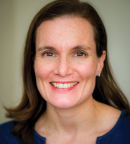Precision medicine is judged according to different values across the multiple stakeholders involved in cancer care. At this year’s Quality Care Symposium, presenters from different sectors of oncology addressed a central question: How do we assess quality in the age of precision medicine?1,2
Right Gene, Right Therapy

We can improve quality if we identify subpopulations that will have a better response to therapy. We can truly increase safety using less toxic therapies.— Stacy W. Gray, MD, AM
Tweet this quote
Stacy W. Gray, MD, AM, a medical oncologist at Dana-Farber Cancer Institute, gave the clinician’s perspective. “Cancer patients, family members, and providers hope that precision medicine will offer them a new range of therapies and unprecedented hope,” she said.
Dr. Gray gave an example of improved outcomes using a case history of a male patient with metastatic melanoma. “The patient had hundreds of visible melanoma deposits under his skin. He had tumor testing, and a BRAF alteration was identified. Within weeks of treatment with a BRAF inhibitor, his tumors melted away. This is what patients and their families hope for when they walk into the clinic. And this is the kind of outcome that clinicians are increasingly seeing on a daily basis.”
Dr. Gray emphasized that the oncology community is in a rapidly changing landscape, and precision medicine is at its core. “Although the melanoma patient had a profound response to targeted therapy, he could develop resistance, and that happens rather quickly. So our understanding of how to treat these patients must evolve as their tumor biology evolves,” she said.
Not Without Risks
Dr. Gray then looked at the relationship between precision medicine and quality. “First, we need to deliver effective, evidence-based care that improves outcomes. We need to provide safe and equitable patient-centered care for all patients—and timely, efficient care that cuts waste in the system,” she said. “We can improve quality and effectiveness if we identify subpopulations that will have a better response to therapy. We can truly increase safety using less toxic therapies.”
She noted that along with the promise of better outcomes, there are also significant threats to care quality with precision medicine. “We rely on preliminary evidence showing that a targeted therapy might be effective, but we just don’t have proof. And there are always risks involved when processing large volumes of data. Finally, cost and access to genetic tests and targeted therapies, as well as concerns over possible discrimination, threaten care equity.”
Dr. Gray stressed that “as we move further into precision medicine, we need better information for patients and providers so they can keep informed about this rapidly evolving discipline.”
The Payer’s Perspective

Part of our stewardship is in getting drugs to people where we have evidence they work, but the other part is making sure that we put people on clinical trials and capture the data quickly so we can evolve the field and sort out what works and what doesn’t.— Lee N. Newcomer, MD, MHA
Tweet this quote
Lee N. Newcomer, MD, MHA, a medical oncologist and Senior Vice President at UnitedHealthcare, began by explaining why precision medicine matters to payers. “In 2013, it took half of an average family of four’s income to cover their health-care insurance premiums and out-of-pocket expenses. Naturally, households didn’t cut their income in half, but the money came from sources such as employer or government programs funded by their income taxes. It’s projected that by 2025, it will take a 100% of an average family’s income to purchase health-care coverage,” he said, adding, “We have a big problem, and we have about 9 years to solve it.”
Dr. Newcomer noted that we often hear about “the one patient who responded to precision medicine,” but he shared an anecdote to show the other side of the equation. He said that he would be attending a wedding where the father of the bride is dying of colon cancer—the end to a brutal 6 years during which he underwent five surgeries on eight different regimens. The last was a precision medicine approach in which he had an actionable gene but no evidence that the therapy would work. He paid for it out of pocket. At his daughter’s wedding, he would be wearing white gloves to remind people not to shake his hand, as any contact causes excruciating pain.
“What bothers me is that the next person who finds that actionable gene won’t know it was a colossal failure in colon cancer, because the data were not captured and stored,” said Dr. Newcomer.
Better Outcomes With Less Cost
He continued, “Part of our stewardship is in getting drugs to people where we have evidence they work, but the other part is making sure that we put people on clinical trials and capture the data quickly so we can evolve the field and sort out what works and what doesn’t.”
Dr. Newcomer explained that UnitedHealth Group tried to solve that problem by identifying what they were paying for. “If you had a genetic test last year, your chance of getting United to pay for it was nearly 100%. But we don’t know what [type of test you had] because the CPT [Current Procedural Terminology] codes are pretty nonspecific. An outside consultant firm decoded our claims and found that out of 401,000 claims, there were 5,958 CPT code combinations to build basically 20 sets of tests.”
He continued, “Starting this fall, we will now know exactly what test is coming in, which allows us to determine if a specific test has any analytic validity and whether it is really measuring what we think it is, which is an important consideration in gene sequencing.”
Dr. Newcomer stressed that this new exciting but complicated world of precision medicine cannot evolve in a safe, cost-effective way without solid evidence to demonstrate effectiveness of each test or therapy. He noted Vice President Biden’s Cancer Moonshot initiative and said, “If I sat with the Vice President, I’d give him my moonshot idea: Within 3 years, put 100,000 patients on phase II trials for actionable genes. We could do that if we started thinking innovatively, and it would give us a database of information about targeted therapies that would absolutely blow us away.” ■
Disclosure: Dr. Gray reported no potential conflicts of interest. Dr. Newcomer is an employee and shareholder of UnitedHealth Group.
References

